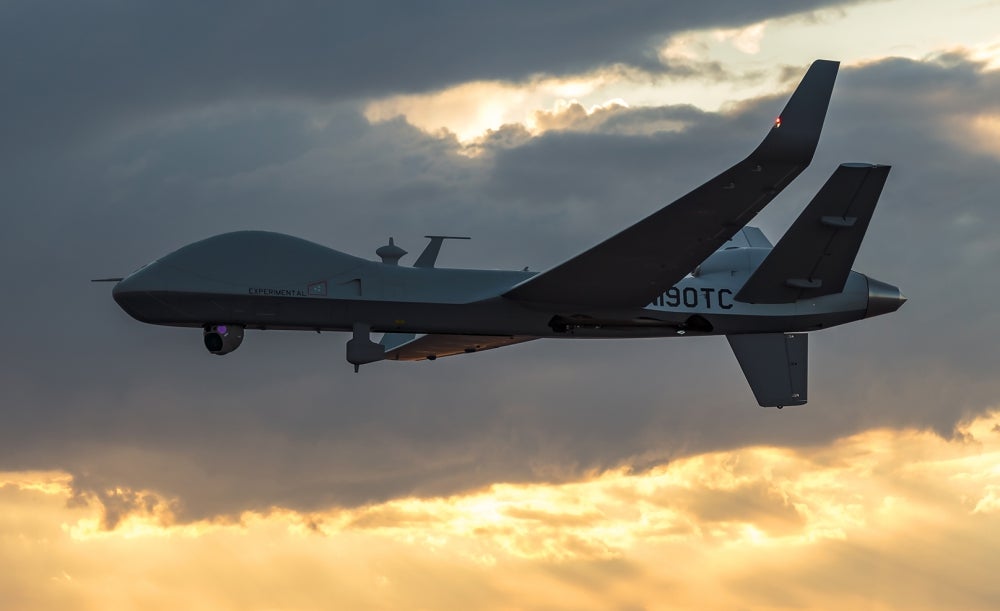Indian Navy To Lease Two Sea Guardian Drones From US
On Wednesday, November 25th, it was confirmed that the Indian navy has inducted two MQ-9B Sea Guardian drones on lease from the United States. With its max speed of nearly 300 miles per hour and a range of 1,150 miles, the unarmed drone is designed primarily for reconnaissance and surveillance missions. American support staff will help with maintenance of the drones but the vehicles will be directly operated by the Indian Navy.
India has long had its eyes on expanding its arsenal of unmanned vehicles. The navy is increasingly looking towards drones, both aerial and undersea, as a viable avenue for carrying out its force restructuring. Back in 2018, the US agreed to provide India with 22 Sea Guardian drones but due to fiscal constraints, India recently cut its acquisition target to just 12. A tri-service proposal to acquire 10 drones each for the army, navy and air force has also been in the works but due to budget constraints, has also been delayed.

Throughout the Cold War, the Indo-American relationship had generally been rather cool. America was not willing to accept the viability of India’s position as “unaligned” in the struggle between the USSR and the USA, leading to bitterness on both sides. The Indian nuclear program further alienated the US, while America’s increasingly close relationship with Pakistan likewise pushed India away.
Since the 2000s, however, the relationship has improved significantly. The US break with Pakistan and the growing consensus on China’s threat to both nations’ interests has been pushing the countries towards an increasingly concrete partnership, including that in the military sphere. Recently the two countries agreed a critical deal to share important satellite data, something the U.S. has only done previously with its closest partners.
The US increasingly sees the Indian Navy as an important ally for keeping China’s military from gaining a strong position in the Indian Ocean. India is likewise concerned with what it sees as Chinese encirclement through the Chinese Navy’s “String of Pearls” strategy in the Indian Ocean but the tensions on the land border with China have been pulling resources away from the navy.

